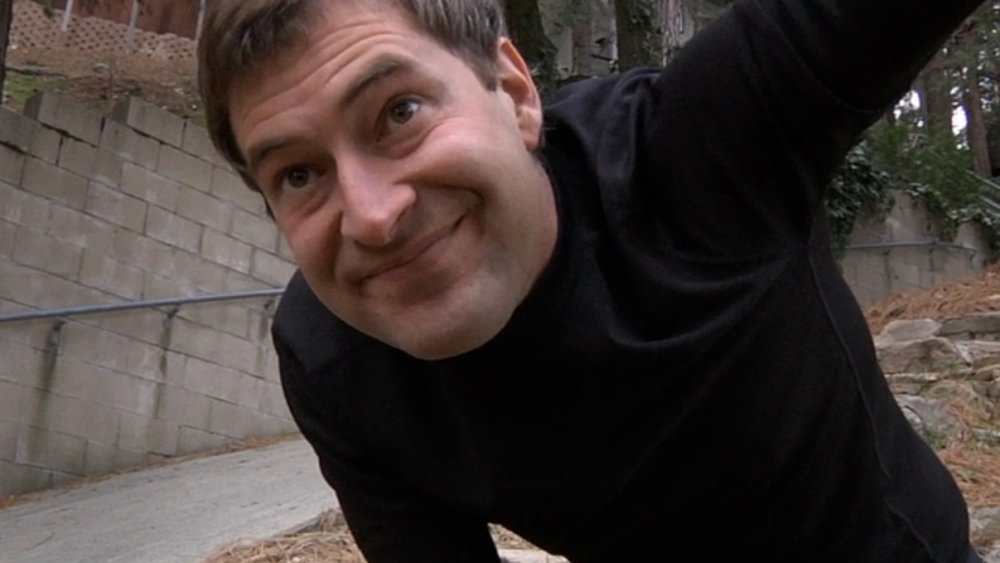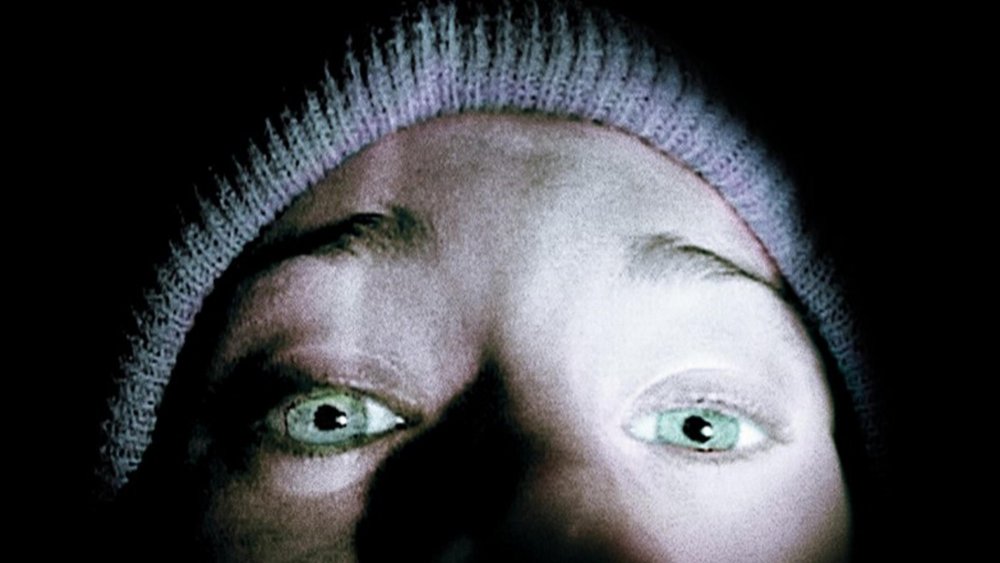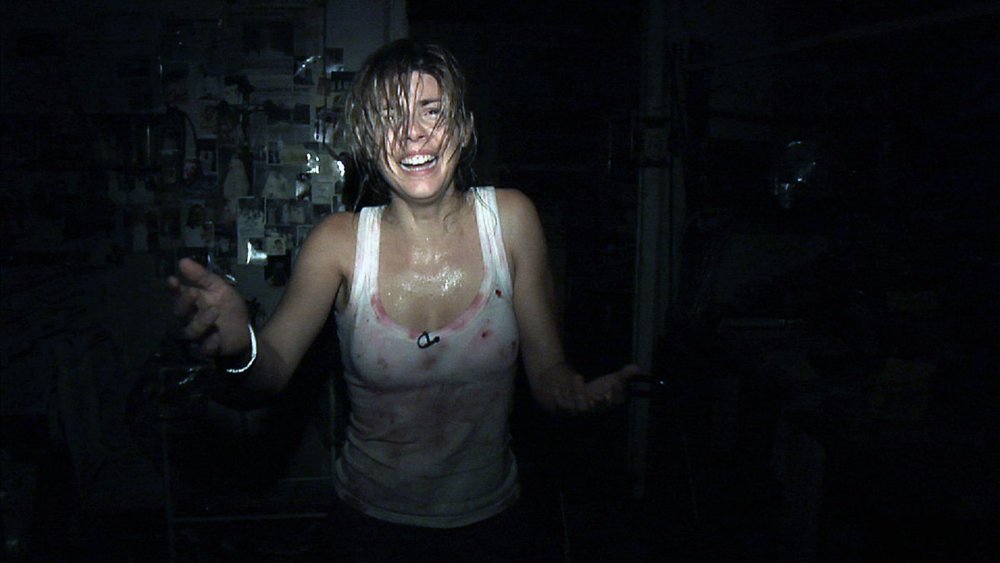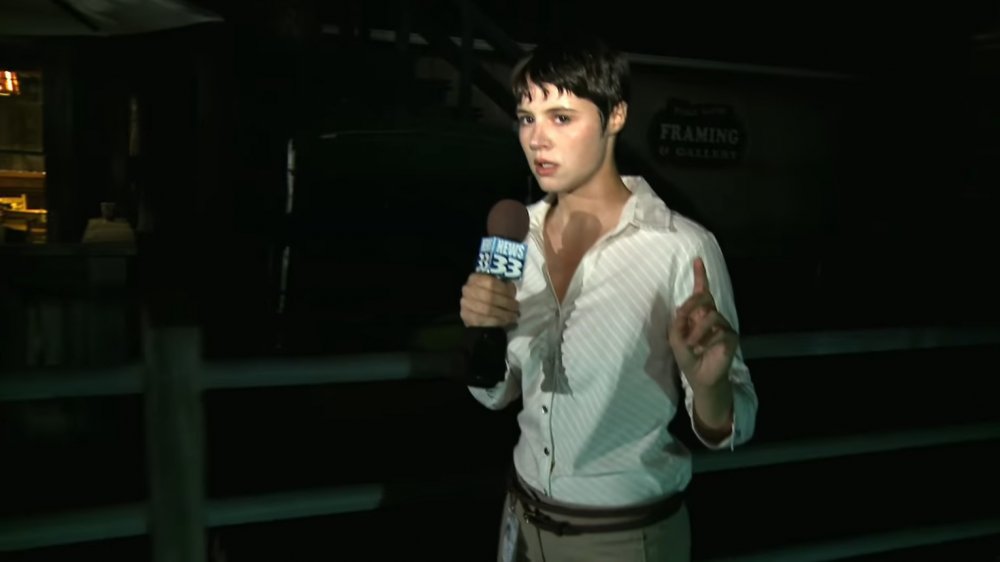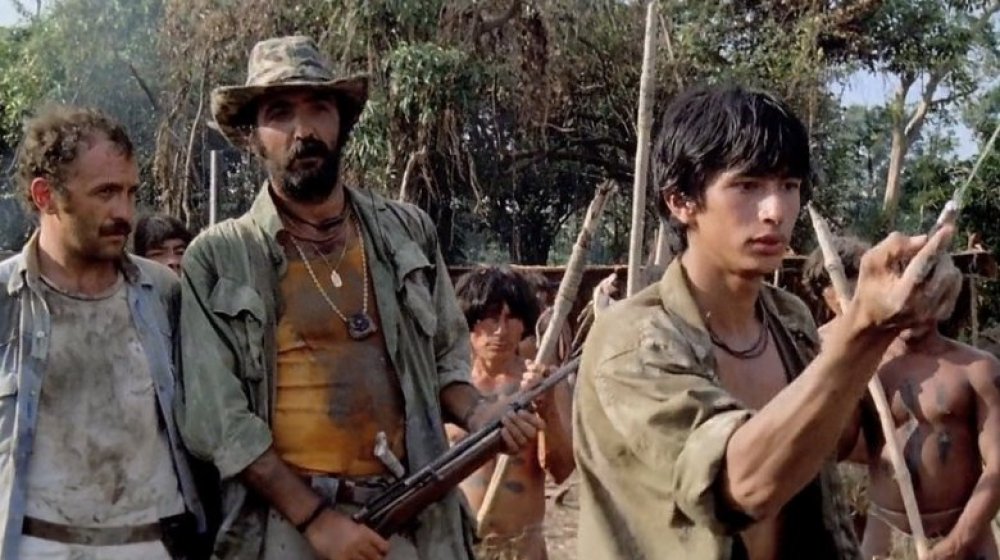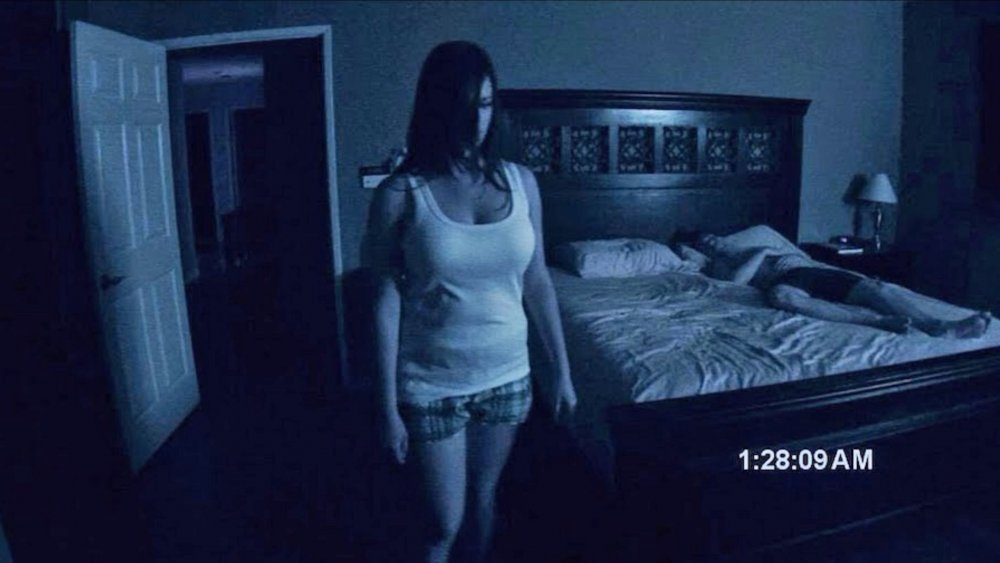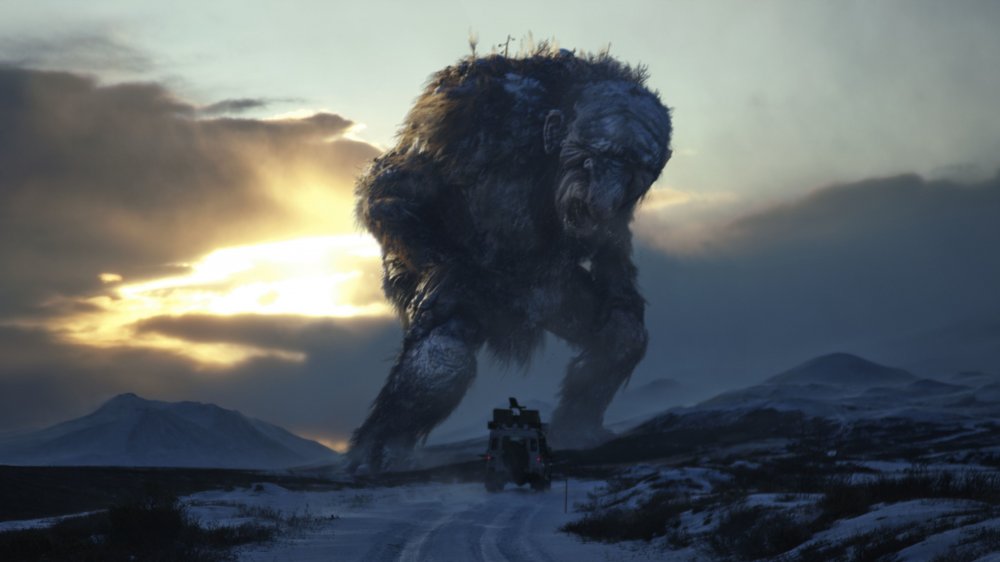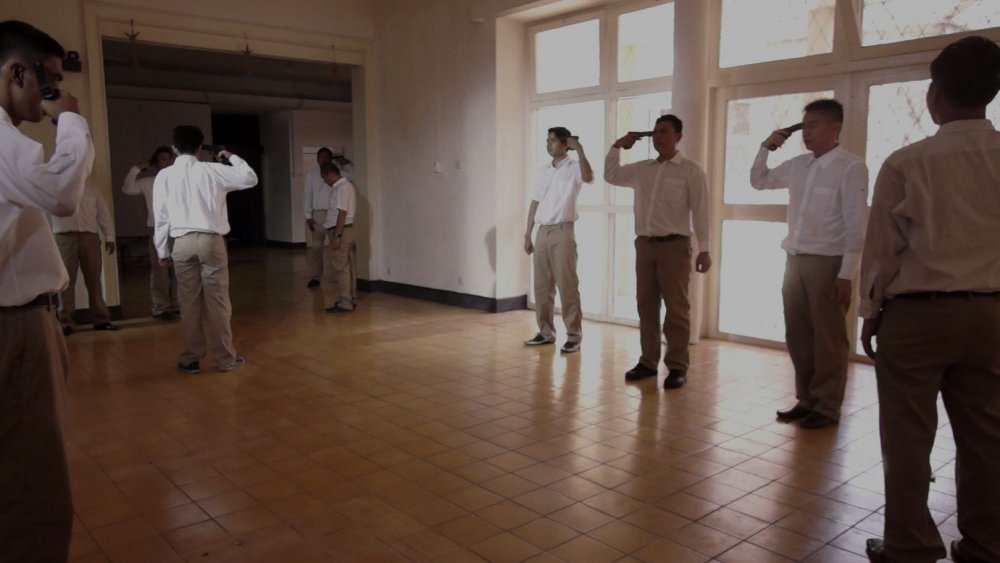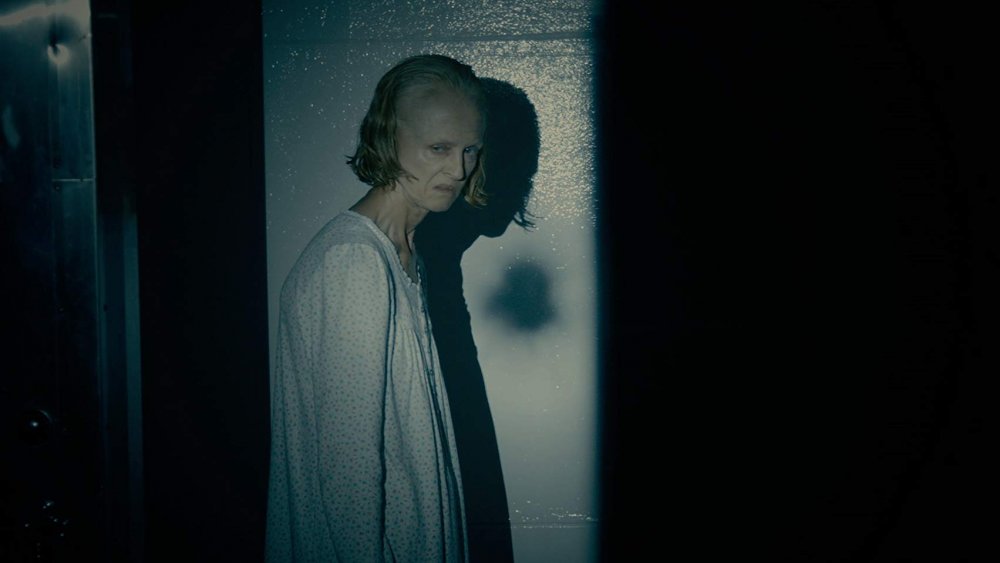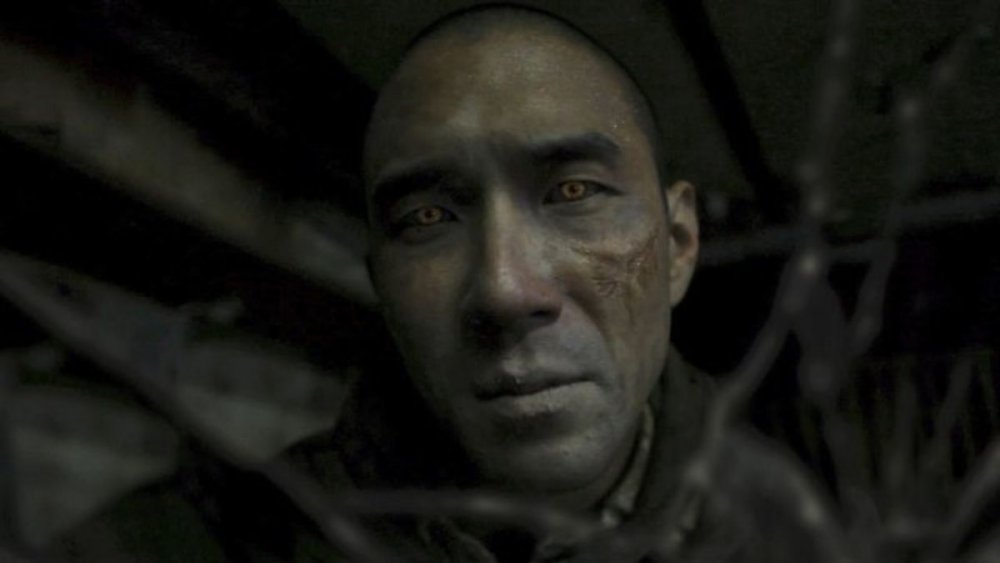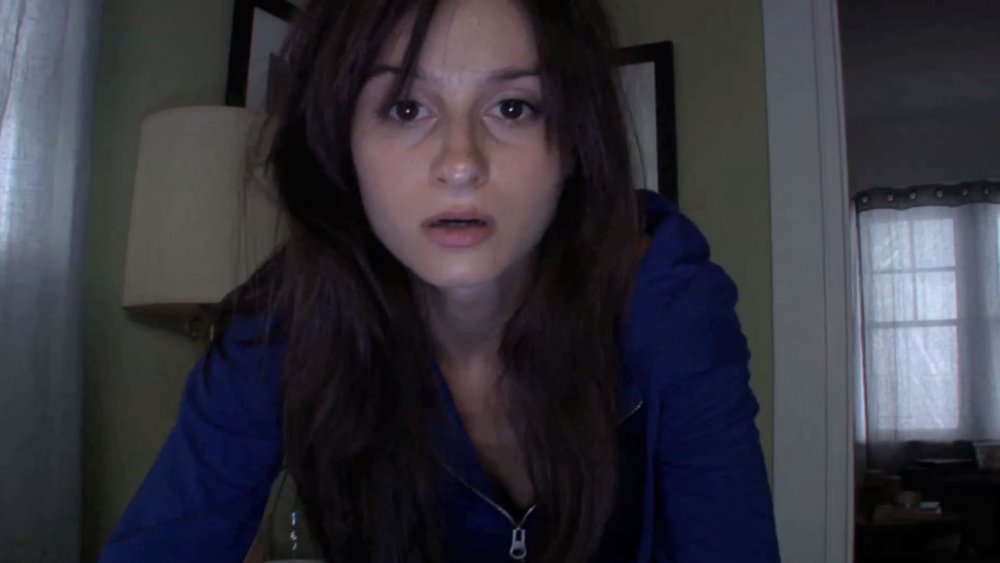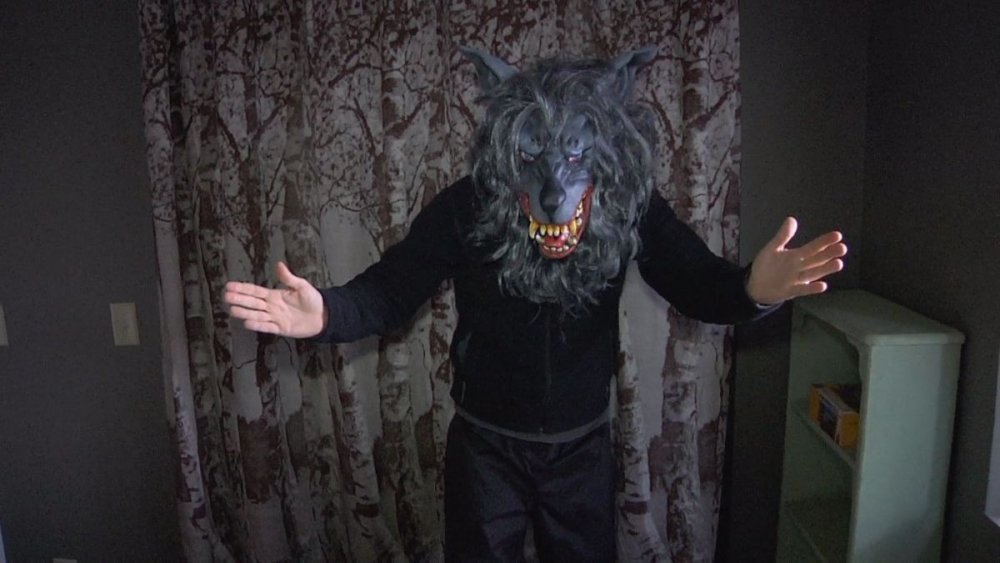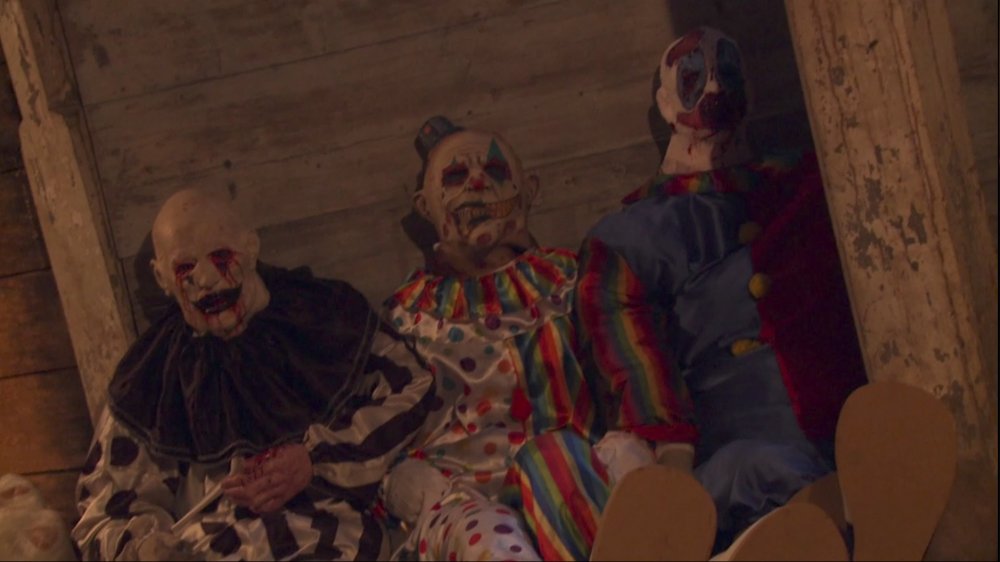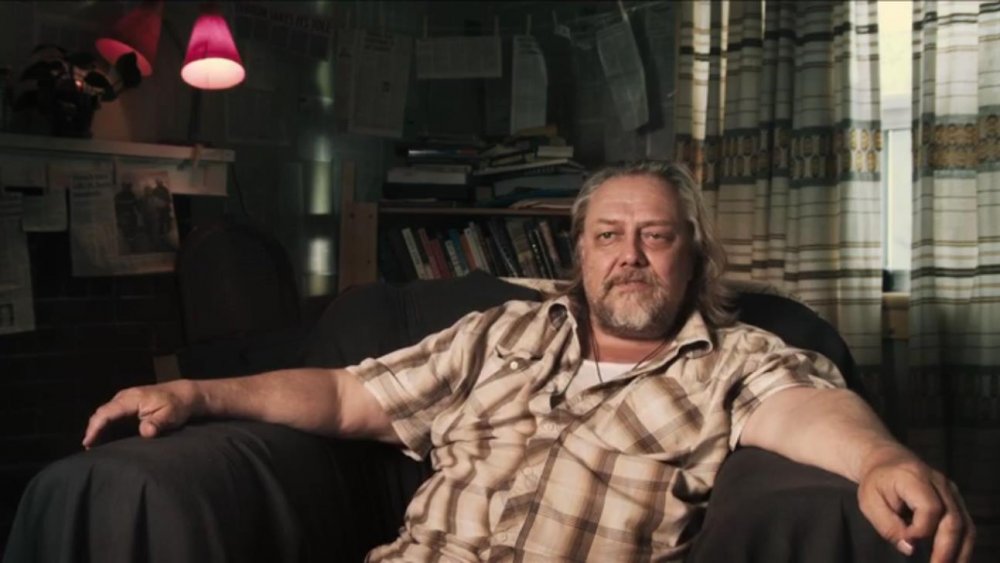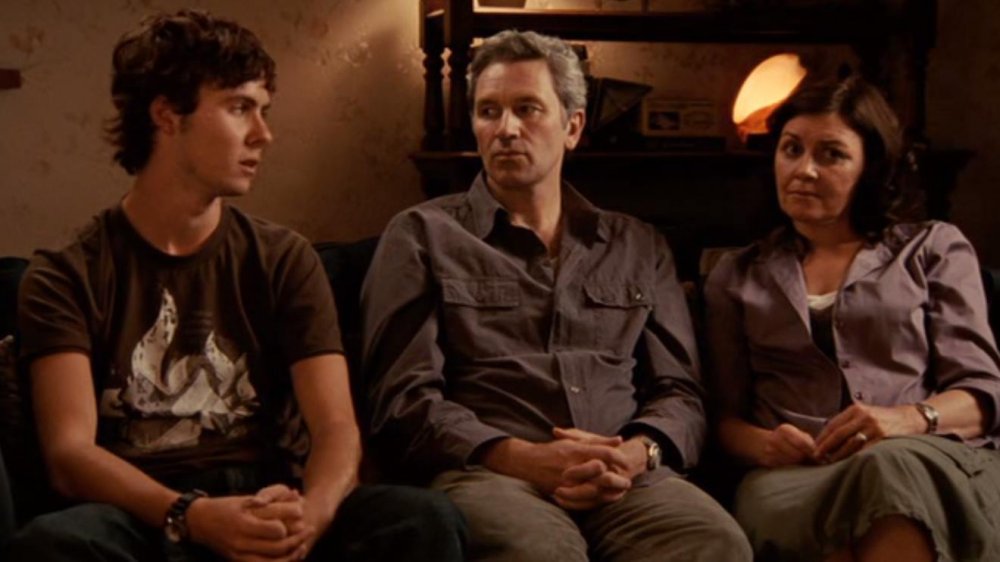Found-Footage Horror Movies That Are Actually Good
Found footage is by no means a new addition to the horror genre. Throughout the '80s and into the '90s, found-footage films popped up here and there, but they never really achieved critical or financial greatness. By the late '90s, however, production companies had started to realize the potential behind found footage. The ability to make a film with a next-to-nothing budget and no-name actors meant there was high probability for turning a sizable profit, and companies like Blumhouse Productions took on the task of combining low-budget filmmaking with high-quality arthouse movies.
There were some immediate successes, and the market quickly embraced the style. Suddenly, found-footage films were everywhere. The fact that a movie could be made on such a shoestring budget meant that any and every horror trope could play out via shaky cam, and it did. And as any moviegoer knows, found-footage films are still hitting theaters today. And sure, a lot of these movies are garbage, but for all the bad ones out there, there are still a few gems worth watching. From obscure flicks to landmark films, these are the found-footage horror movies that are actually good.
The Blair Witch Project set the bar for found footage
When Daniel Myrick and Eduardo Sanchez went into The Blair Witch Project, they had no idea it would wind up having the sort of impact it did. The directors told Bloody Disgusting in 2014 that their biggest hope for the film was that it would make it to video release. In reality, it made it to Sundance, and then went on to usher in a slew of new found-footage films, including a not-so-great sequel and a 2016 remake.
The movie, about three filmmakers who go in search of a legendary witch and find more than they bargained for, turned out to be one of the most original and critically acclaimed movies in its genre ... but it came at a cost. Myrick and Sanchez gave their actors little to no information going into the experience, and over the course of The Blair Witch Project's filming schedule, they slowly deprived them of food and sleep. "Heather [Donahue] thought she was may have signed up for a snuff film," Myrick told Bloody Disgusting.
But perhaps the most successful thing about the film is in its ambiguity. It's really just a trio of campers in the woods, hearing noises and coming across weird, ritualistic totems. The witch is never seen, and the ending is a little confusing. But sometimes, the best films are the ones that keep us guessing.
REC makes you feel like you're in the film
In 2007, Jaume Balagueró and Paco Plaza set out to make a horror film that would bring audiences further into the action than ever before. Balagueró told IGN that their goal was to make their audience feel as though they were a part of the film itself. As he explained, "We wanted to use the film screen in a way that is similar to the experience of playing video games."
REC does exactly that. Using a single camera, the film follows a reporter (Manuela Velasco) along on a story that begins as a "day in the life" exposé on some firemen and ends with them trapped in an apartment building that gets quarantined by the government. As the night progresses, the reason for the quarantine becomes terrifyingly obvious.
Unlike The Blair Witch Project, REC doesn't hold back when it comes to scaring its audience. The films throws itself into horror almost immediately and stays there for the remainder of its 80 minute runtime. It's short, not so sweet, and to the point. It doesn't try to be anything other than a shocker, and in that regard, it completely succeeds.
The Bay is a terrifying movie with an impressive budget
Barry Levinson is responsible for Rain Man, Sleepers, and Good Morning, Vietnam. He isn't the first name that comes to mind when discussing found-footage horror movies. But in 2012, Levinson co-wrote and directed The Bay, a found-footage film that's about as far off from his usual repertoire as a film can get. The Bay documents a 4th of July incident in Claridge, Maryland, that took the lives of 700 of its residents. Through web cams, phone videos, and recorded calls to emergency services, details emerge regarding a parasitic outbreak that affected everything living in the bay.
As far as found-footage goes, The Bay has more production value than most. It looks and feels like the real deal, which is only amplified by a solid story with a legitimate social message and a cast that actually knows what they're doing. Essentially, The Bay is nowhere near amateur, and getting through the entire thing will actually make your skin crawl.
Cannibal Holocaust is the most controversial found-footage movie ever made
Cannibal Holocaust might be the most controversial film of all time. Released in 1979, the found-footage classic tells the story of an anthropologist who heads to South America with a rescue crew in search of a missing group of documentary filmmakers. He never finds them, but their footage lays out the horror of what actually befell them.
Cannibal Holocaust was the most shocking thing in theaters at the time, and the consequences of being the first found-footage horror film hit hard. The film's director, Ruggero Deodato, was put on trial in Italy for the suspected murder of his actors. When he brought one of them to court to prove the charges were false, he was fined for animal cruelty, and Cannibal Holocaust was banned from Italian theaters for three years. In some countries, it only became available to view in 2001.
It's difficult to stomach, and not just because of its portrayal of death and violence. Deodato has come under fire for the perceived exploitation of Colombia's and Brazil's indigenous peoples. But the film is the granddaddy of them all, and for that, it's worth a watch.
Paranormal Activity reinvigorated the found-footage genre
For a decade after The Blair Witch, we got a lot of cheap, pointless found-footage horror that lacked any real scares. Then Oren Peli made Paranormal Activity, a film about a couple who experience strange things in their new home and decide to try and solve the supernatural mystery by setting up cameras throughout the house. What they find is beyond creepy, and things only get worse the more they try and document the source of their misery.
Paranormal Activity is one of those horror films that leaves most of its terror to the unknown. Lights go on and off in the background, doors move a few inches, and sheets are pulled by an invisible force. All of this goes on unbeknownst to the film's main characters, so watching it happen while waiting to see if it wakes them up turns into an exercise in how long you can actually hold your breath. And the ending is one of the better final scares any horror film has had in decades.
Trollhunter is equal parts creepy and comical
Most of the films that fall into the found-footage horror genre are serious endeavors. Whether it be through gore, shock value, or the regular creep factor, the point that most movies try to make is that somewhere, there is something that is absolutely terrifying, and you should be very, very afraid. Trollhunter isn't really like that. The 2011 Norwegian film is scary, yes. But it's also incredibly funny. And it's chock full of giant, murderous trolls.
André Øvredal created a film that stays true to its roots in folklore, set in a very modern world steeped in cynicism. When a group of film students discover the government has been hiding the existence of trolls along the Norwegian countryside, they take it upon themselves to document the creatures. Visually, Trollhunter looks modern and well-produced. But the film is 90 percent improvisation, so what you see on the screen is done mostly on the fly. It all works, though, and the movie winds up being one of the most entertaining found-footage films in recent years.
V/H/S/2 far surpasses the first film
V/H/S was an okay movie. The 2012 found-footage horror anthology had some originality in it and a few scares, but it fell into the category of mostly forgettable 2000s horror. A year later, V/H/S/2 came out, and while most sequels tend to be far worse than the original, this sequel happens to be one of those rare finds that surpasses its predecessor in nearly every way.
That doesn't mean V/H/S/2 is without its flaws. Not every one of its five horror stories is a winner, but the ratio of those that are make the film well worth your time. The biggest standout is "Safe Haven," by Timo Tjahjanto and Gareth Evans, the former having written and directed The Night Comes for Us and the latter having written and directed both The Raid 2 and The Raid: Redemption. "Safe Haven" delves into suicide cults, demonic worship, and zombies, making it not only one of the most well-rounded horror stories of the bunch, but one of the creepiest as well.
The Taking of Deborah Logan is an unsettling possession flick
Deborah Logan (Jill Larson) suffers from an aggressive form of Alzheimer's. In order to save their home from being repossessed, her daughter Sarah (Anne Ramsay) convinces Deborah to allow a documentary crew to film her as part of an Alzheimer's study. The further along they get into their study, however, the more obvious it becomes that Deborah may be suffering from something that isn't at all based in science.
So the premise isn't anything new or particularly progressive. The Taking of Deborah Logan is a pretty typical possession story involving a cult-like ritual and child sacrifice. But ultimately, the film's draw isn't its plot. Instead, it's watching Larson slowly devolve into something not quite human, in the most nightmarish ways. The actress definitely carries the film, but it also benefits from some truly creepy visuals throughout that, in spite of its shortcomings, make The Taking of Deborah Logan a worthwhile horror experience.
Afflicted is so frightening because it focuses on story first
In 2014, real-life best friends Derek Lee and Cliff Prowse set out to reinvigorate the found-footage horror genre with their feature film debut Afflicted. The film follows semi-fictional versions of Lee and Prowse as they embark on a one-year journey around the world, but they're stopped short when a one-night stand transforms Lee into something unimaginable. The duo told Collider that their goal with Afflicted was to focus on the story itself, and to allow the found-footage aspect of the movie to work only in their budgetary favor. "[T]his was a character driven, heartfelt, but still fun and technically possible film that we could shoot for less than a million dollars," Lee explained.
Afflicted winds up being just that — a character-driven horror film about the morality of becoming a something other than human. It's well shot, and the effects stand up, even in spite of its meager budget. More than anything, though, Afflicted works not by using cheap jump scares, but by focusing on the story itself, as well as the relationship between two best friends who are trapped in a foreign land.
The Den is a tale of online horror
Taking a bit of a different approach to found-footage horror, 2014's The Den focuses on the uncertainty of web cams and the fear of being hacked. Elizabeth Benton (Melanie Papalia) is doing her graduate project on human interaction, specifically those interactions that occur in online chat rooms. She focuses her efforts on "the Den," a Chatroulette-type site that allows Elizabeth to forge quick and immediate connections with people around the world. But when she witnesses the murder of a young woman, Elizabeth finds her life turned upside down by a group of masked killers who prey on the Den's users.
The most terrifying thing about The Den is its concept. In a world ruled by online presence, it's easy to feel safe and secure behind a computer screen. But when a stranger is able to take that away with a single key stroke, the horror of being completely exposed and vulnerable takes hold. That, along with the film's focus on chat-style footage, gives The Den a sense of originality and modern-day suspense.
Creep is, well, incredibly creepy
There's really nothing scarier than the idea of a psycho lurking around on Craigslist. That's the premise for 2014's Creep, which stars Mark Duplass as Josef, a man who claims to be dying and wants to create a video series for his unborn son. He hires Aaron (Patrick Brice) to film, and things get really, really weird.
Creep explores our need to be polite in social situations, and how that need can come at the price of our own safety. Josef seems like a kind and genuine person, but anyone can seem to be anything when they're someone you know from the internet. The film isn't gory, and it doesn't exist on jump scares. Instead, Creep finds a way under you skin because Duplass is so incredible at playing someone who comes off as both sincere and mildly repugnant. And then there's that line that Aaron is afraid to cross. Should he hurt Josef's feelings and leave this weirdo behind? Or should he put up with the guy's increasing creepiness? Sure, politeness has a place, but a remote cabin in the woods isn't it.
Hell House LLC is a found-footage nightmare
Hell House LLC takes the idea of a haunted house and mashes it into a found-footage nightmare, but in the best way possible. The 2016 film tells the story of Hell House, a New York City-based Halloween attraction that sets up shop at an abandoned hotel in the small town of Abaddon, New York. After 15 attendees and nearly the entire crew are found dead the morning after opening night, a series of tapes lays out the truth of what actually happened inside.
Although the film suffers a bit from a story that we've seen a million times before, Hell House LLC still finds a way to scare its audience, and it's through some pretty clever placement. Throughout the house, monsters come in and out of frame, but not in an outright, jump in front of the camera sort of way. Instead, they tend to hide in the shadows, barely visible for a moment or two before they disappear completely. It's nerve-wracking trying to keep track of them, and it's exactly that feeling that makes the movie a successful horror flick.
The Conspiracy is a found-footage movie that feels like a documentary
The Conspiracy, a 2013 found-footage horror film that definitely isn't real, feels like it could totally be real. That's the thing about conspiracy movies, though. You're left questioning everything you've just seen, even if all of it is made up for the sake of terrifying an audience.
This conspiracy theory movie involves two documentary filmmakers, Aaron (Aaron Poole) and Jim (James Gilbert) who set out to learn more about their favorite local conspiracy theorist, Terrance (A.C. Peterson). When Terrance suddenly goes missing, Aaron and Jim are drawn into the mystery of the Taurus Club, an ancient cult comprised of world leaders that's been behind every major event throughout history.
The Conspiracy works in part because the theories it's built upon are actually floating around out there. A shadow society that controls the world? It's a thing people really believe in, so the film carries a sense of possibility. It's as though The Conspiracy isn't quite a documentary, but we wouldn't be surprised if it turned out to actually be one.
Lake Mungo is a scary film about ghosts and grief
Half supernatural mystery, half ghost story, 2009's Lake Mungo is a gripping tale of death, grief, and secret lives. Utilizing the tried and true "based on a true story" horror hook, this found-footage film tells the story of Alice Palmer (Talia Zucker), a 16-year-old who drowns near her family's home and then returns to haunt them. Things aren't at all the way they seem, and the truth of Alice's life may have been a bigger mystery than her death.
In spite of its catchy marketing ploy, Lake Mungo is a much better movie than the average haunter. It's most successful in its portrayal of Alice's family, who come across as legitimate and authentic, a real family in the midst of the grieving process. There's always the question in the back of the mind regarding the film's validity. Is it a true story? Of course not, but that doesn't make its final scene any easier to digest.
